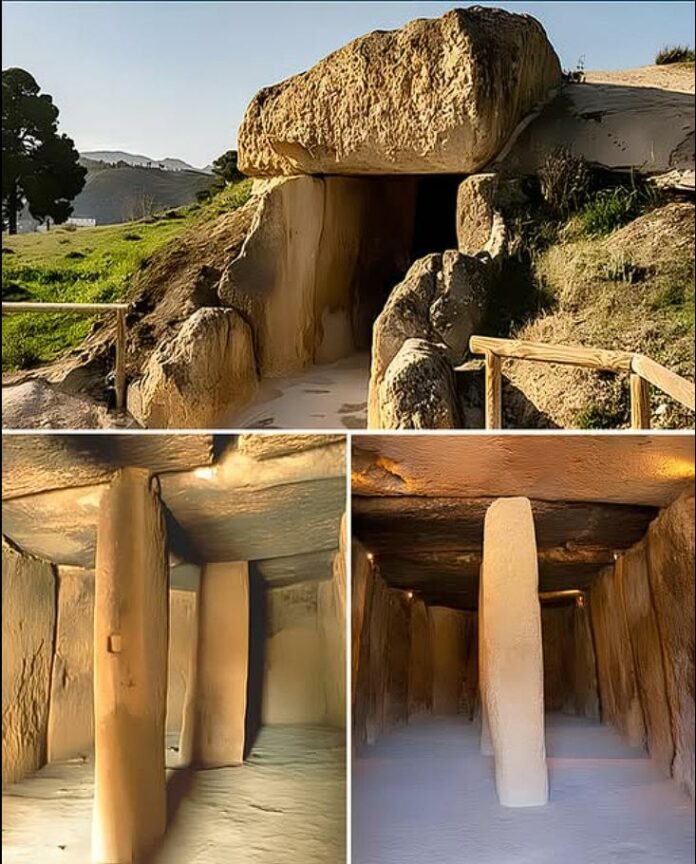In the sun-drenched hills of Andalusia, Spain, lies a structure so ancient and remarkable that it challenges our understanding of prehistoric human capabilities. The Dolmen of Menga in Antequera stands as a silent sentinel of our past, connecting modern visitors to the ingenuity of our Neolithic ancestors who walked these lands over 5,000 years ago.
The Colossal Stone Puzzle of Antequera
When first approaching the Dolmen of Menga, visitors often struggle to comprehend what they’re seeing. What appears to be a natural hill reveals itself as something far more extraordinary—a carefully engineered passage tomb constructed between 3700 and 3200 BCE. This isn’t just any megalithic structure; it’s one of Europe’s largest and most perfectly preserved dolmens.
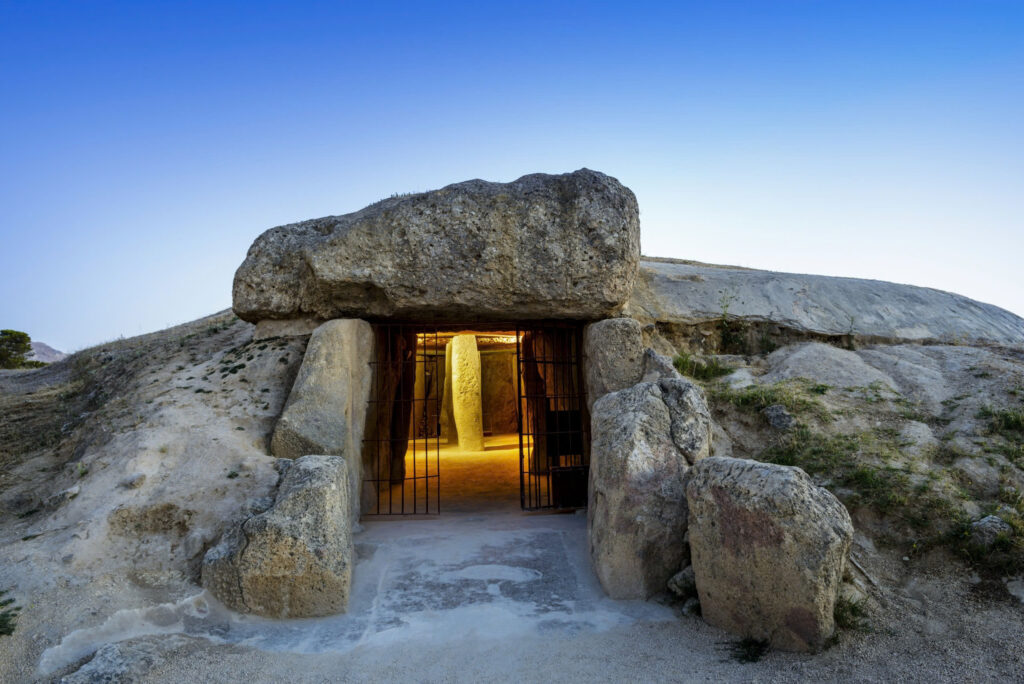
The numbers alone are staggering: 82 feet in length, 16 feet wide, and standing 11 feet high. But the true marvel lies in its construction. The capstone—a single piece of rock weighing an estimated 180 tons—defies modern logic. How did people without wheels, pulleys, or metal tools move such enormous stones? This question has puzzled archaeologists for generations.
Engineering Feats Without Modern Technology
The builders of Menga weren’t just strong—they were brilliant engineers. Without written language, advanced mathematics, or modern construction equipment, they created a perfectly balanced structure that has withstood earthquakes, wars, and five millennia of weather.
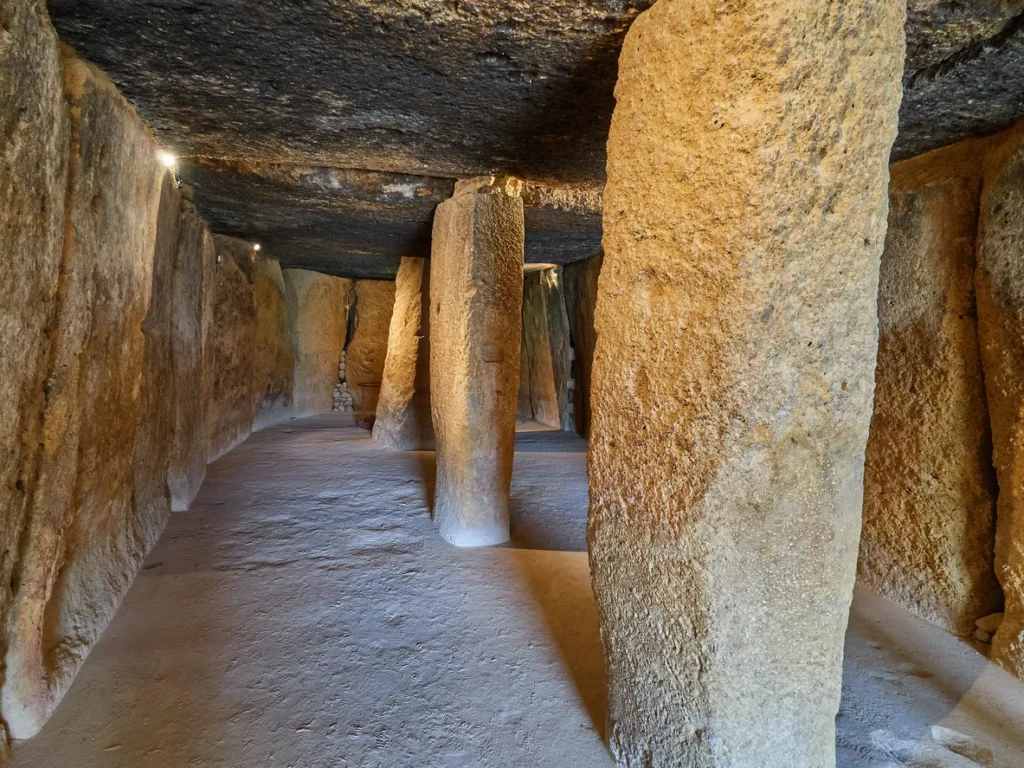
The interior of the dolmen reveals their sophisticated understanding of architecture. The massive stone pillars that support the weight of the ceiling are positioned with remarkable precision. Three central pillars run along the chamber’s axis, helping to distribute the immense weight of the capstones. The stone walls lean slightly inward as they rise, creating a stable corbelled effect that has kept the structure intact for thousands of years.
Sacred Space Between Worlds
The Dolmen of Menga wasn’t merely a tomb—it was a cosmic gateway. Archaeological evidence suggests it was carefully positioned to align with the nearby mountain peak La Peña de los Enamorados (Lovers’ Rock) during specific astronomical events.
Rituals and Remembrance
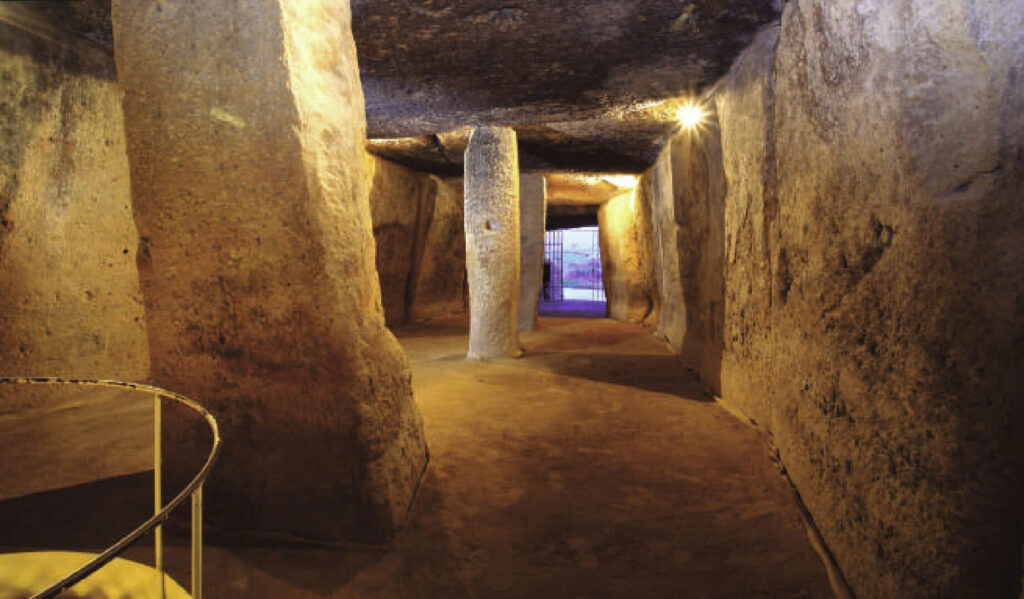
Inside this stone cathedral, our ancestors conducted elaborate ceremonies connecting the living with the dead. The dolmen housed not just human remains but also carefully selected artifacts—offerings to accompany the deceased on their journey to the afterlife.
Analysis of these human remains has revealed fascinating insights into Neolithic society. The individuals buried within Menga weren’t randomly selected—they represented important community members, suggesting a sophisticated social hierarchy already in place thousands of years before the rise of classical civilizations.
A Communal Monument
The construction of Menga was not the work of slaves or forced labor as once theorized, but rather a communal effort representing the shared values and beliefs of an entire society. The enormous investment of time and resources indicates that this was a project of paramount importance to the community.
Legacy in Stone
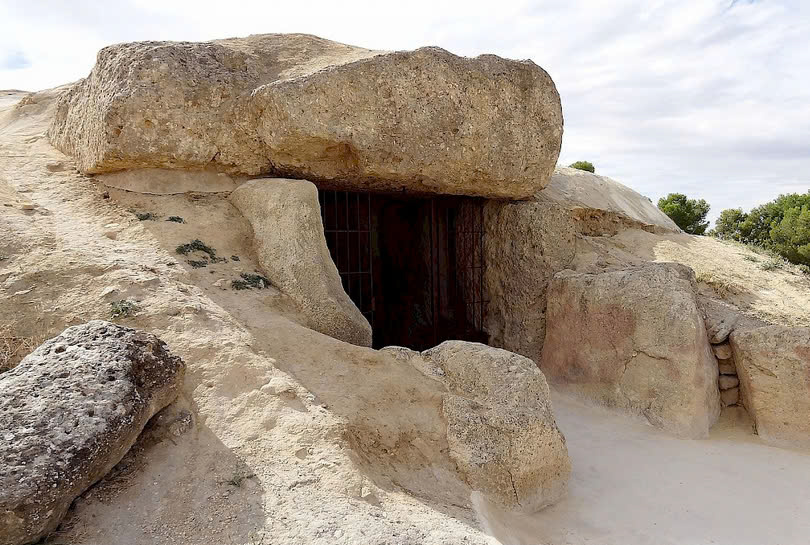
Today, the Dolmen of Menga, along with the nearby Dolmens of Viera and El Romeral, enjoys UNESCO World Heritage status. Together, these structures form the Archaeological Ensemble of Antequera, recognized for their outstanding universal value.
Modern Visitors, Ancient Wonder
As modern visitors walk through the cool stone passage, they follow in the footsteps of countless generations who have marveled at this achievement. Touching the cool surface of stones that were placed by human hands over five millennia ago creates a profound connection to our shared human story.
Preserving the Past for Future Generations
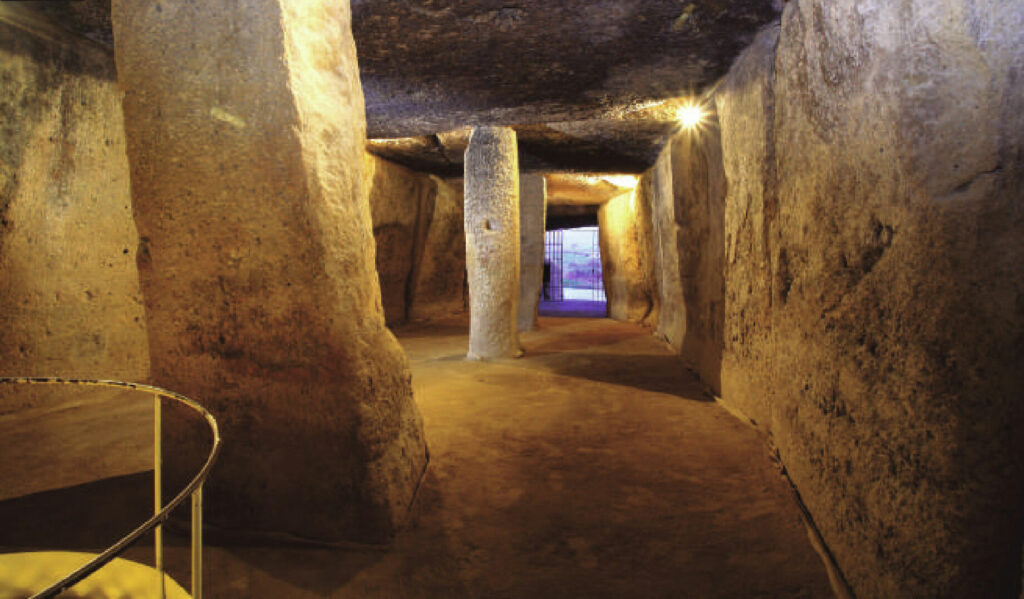
The preservation of the Dolmen of Menga represents one of archaeology’s greatest successes. Unlike many ancient monuments that have been looted or damaged, Menga has survived remarkably intact, allowing contemporary researchers to continue uncovering its secrets.
Video
The Enduring Mystery
Despite decades of research, the Dolmen of Menga still holds many mysteries. Who exactly were the people who built it? What specific ceremonies took place within its chambers? How did they move stones weighing hundreds of tons without modern technology?

While we may never have complete answers to these questions, the enduring legacy of the Dolmen of Menga reminds us that our ancient ancestors were far more sophisticated, organized, and technically proficient than many have assumed. Their monumental achievement continues to inspire awe and wonder, challenging us to reconsider what we thought we knew about the capabilities of prehistoric societies.
As you stand within the cool shadows of this Neolithic cathedral, surrounded by stones placed with purpose and precision over 5,000 years ago, you can’t help but feel connected to those ancient builders—and perhaps wonder what monuments of our own civilization might still stand five millennia from now.
